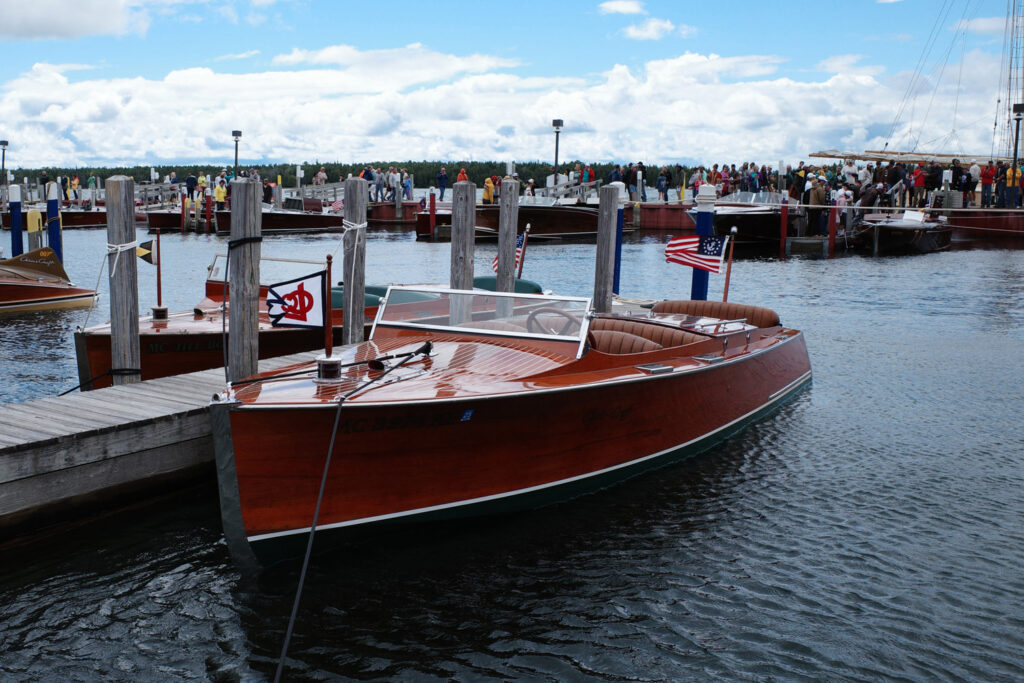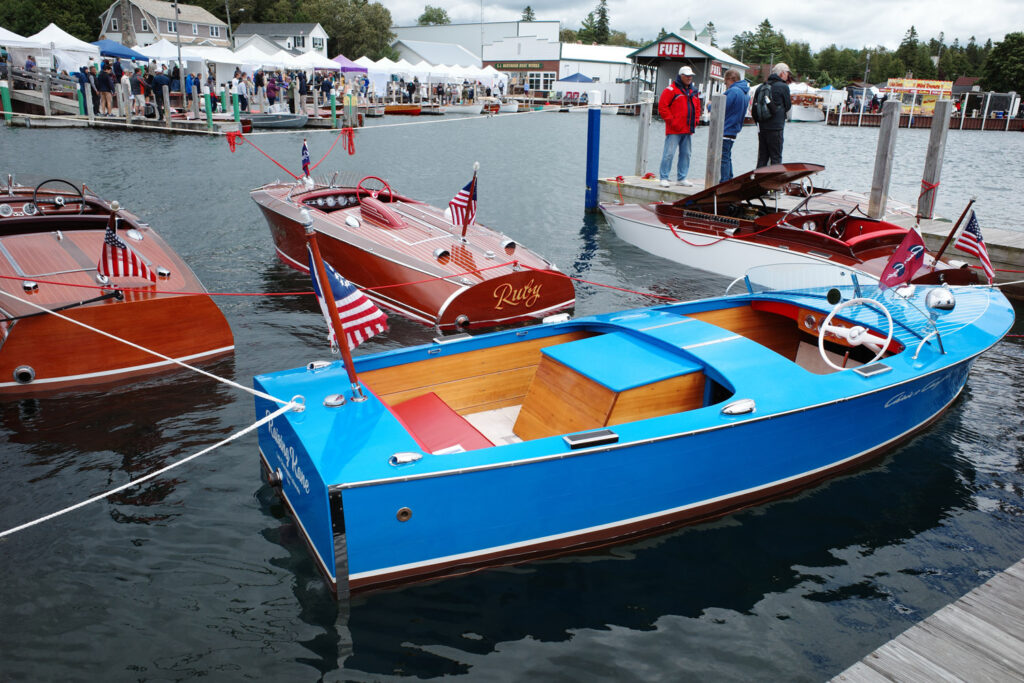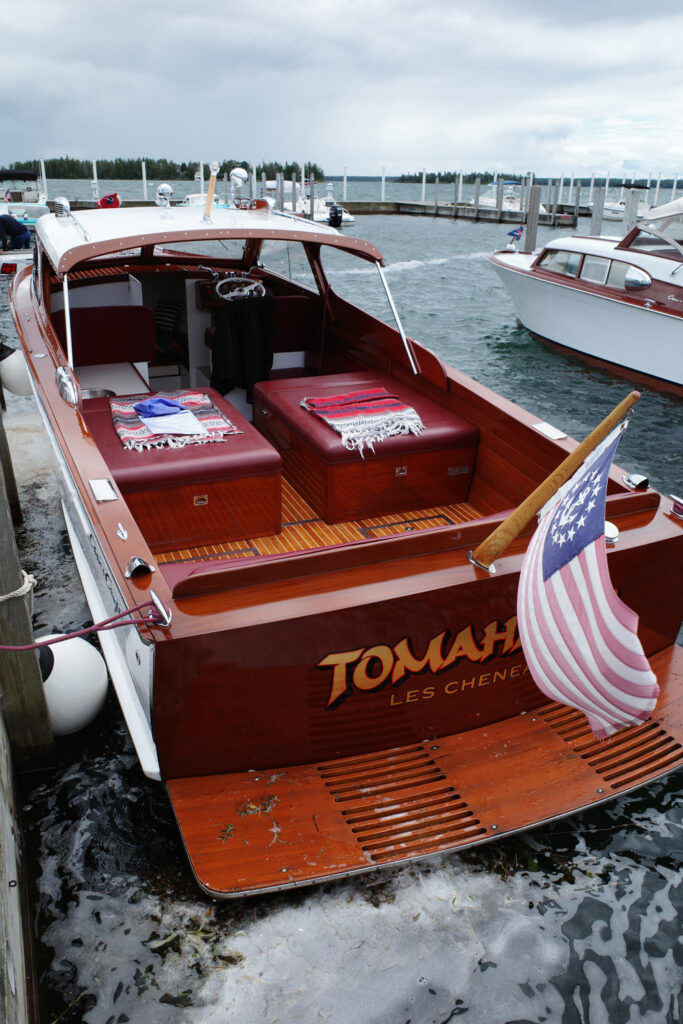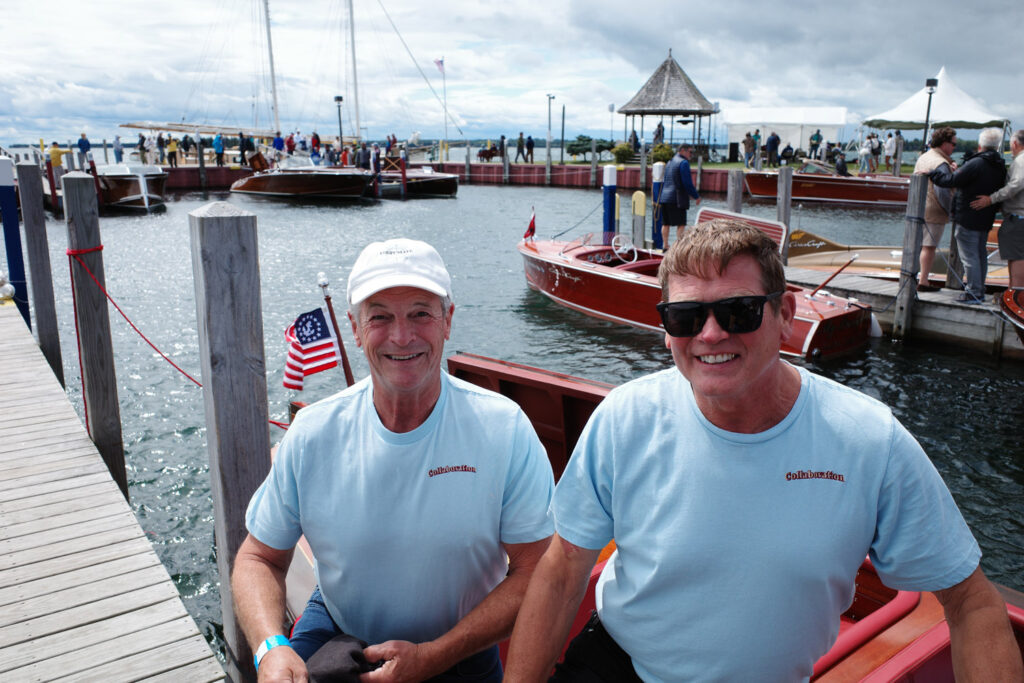I Saw a More Beautiful World in Hessel

Hessel — Every August, a flock of exquisite wooden boats descend upon the marina in Hessel. This tiny town in the eastern Upper Peninsula is home to one of the largest antique wooden boat shows in the U.S. People come from all over to let the sublime nautical beauty wash over them. Some come to show, others to see. The marina transforms, and the clock turns back. Beautiful wooden vessels fill the water. Some are antiques and some are new. All are stunning. The Les Cheneaux Islands Antique Wooden Boat Show is an aesthetic detour. It’s a short trip to another world, a more beautiful one.
Driving east on M-134 along the northern shore of Lake Huron. It doesn’t feel like there is anything out here. Trees and two-tracks. A fisherman in shallow water. Storm clouds travel along on the horizon. Wooded islands decorate the steel blue water. All of a sudden, out of the middle of nowhere, there are cars and trucks parked along the shoulder. Cars crammed in gravel parking lots. People with walkie-talkies are commanding traffic. There are quaint houses and little streets. A restaurant and a bar. It has to be dead quiet here in the middle of February, but not today.
As I’m walking along the wobbly docks, I begin to understand why people make the journey here. Seeing just one of these boats bobbing gently in the water nearly makes you gasp. You want to stop and stare. It’s a breath of fresh air. Seeing dozens and dozens of them, without any neon Jet Skis in sight, is like traveling to another dimension. It’s time traveling, but it’s also something else. These aren’t museum pieces. They aren’t obsolete machines being held behind glass. There is no “look, but don’t touch” attitude here. Almost every owner that I spoke with told me that they are meant to be used. It’s an alternative timeline, a heavenly scene.

I spoke with a man named Kevin, the owner of a boat that was built in 1954 called Little Hacker. His great-grandfather helped build the boat with his grandfather. It left the family sometime around 1958 or 1959. Shockingly, the family found it again in 2004. He shows me the keel number etched in the wood. That’s how they matched it up. They bought it and restored it to a glorious state. He tells me that Hacker-Craft only made these for one year and only made two dozen in total. “This is the only one we know that still survives.” He drives it everyday. “They’re meant to be run,” he says.
He has a 1954 Evinrude outboard motor on the back. I think it’s the same outboard motor we had growing up. Ours was covered in dirt and grime. His is maintained perfectly. It’s stunning. It looks like it was sold yesterday. I remember going at that pull start over and over again as a kid. Finally it would start after 20 excruciating pulls. His starts on the first try. This delicate combination of family history, care, maintenance, tradition, and commitment to aesthetic detail is something that is foreign to our throwaway culture. Past and present. Aesthetic and action. They are unified in this small, beautiful boat.

I spoke with someone who was showing a family friend’s boat called Tomahawk. Even though it isn’t his, he’s sitting here with it because he wants people to see it. This is something that I keep hearing all day. People want the beauty of these ships to be enjoyed. They don’t want them hidden in the dark boathouse, collecting dust. They want them to be enjoyed and experienced. They want people to feast their eyes on this beautiful scene.
I asked him why he thinks people love wooden boats so much. He tells me that he’s a carpenter and that he has spent time on some of the best modern boats that money can buy. Fifty-foot Yellowfins. Fancy boats with Garmin GPS that can take you right to your fishing spot. “That’s awesome, but to me, this is cooler,” he says. “A machine didn’t build this boat, human hands built it. That’s the attraction for me. The beauty is in the craftsmanship.”

I’m no carpenter or craftsman, but I understand what he is saying. These boats are a work of man. They are a work of art. Knowing that these boats weren’t made in some synthetic mold, or by some monster robot, changes our relationship to them. There is even some ancient mysterious truth hidden in the fact that they are wooden. Natural materials, natural man.
Wandering around the docks, I find two carpenters. Mike and George. They didn’t buy their boat, they built it. It took them 15 years to craft a beautiful 19-foot wooden vessel they named Collaboration. Year after year, they worked together on the weekends, from January to April. Mike says It was a lot of trial and error. A learning process. He shows me the dashboard. A beautiful dark mahogany. This piece of wood came from a boat that was originally built in the 1920s. It’s the only piece of this boat that isn’t original. Mike tells me that since finishing their project, “they can’t go anywhere without looking at a boat.” They want to figure out how each one was built. It’s changed the way they look at the world.

Collaboration looks like it could have been built half a century ago. They could have told me it was 100 years old, and I wouldn’t have blinked. But it’s not. It’s a year old. It’s an antique wooden boat show, but it’s not only that. It’s also the present. It’s not a musty museum. It’s continuity.
One of the most incredible things about so many of these wooden boats is the fact that they are used regularly. People sit in the seats, bow smacking waves and engine roaring. Beauty in motion. Vital aesthetics. These boats are a reminder that the world can be beautiful again. It isn’t lost in the past. It isn’t only a dream. I saw a glimpse of it in Hessel.
O.W. Root is a writer based in Northern Michigan, with a focus on nature, food, style, and culture. Follow him on X @NecktieSalvage.